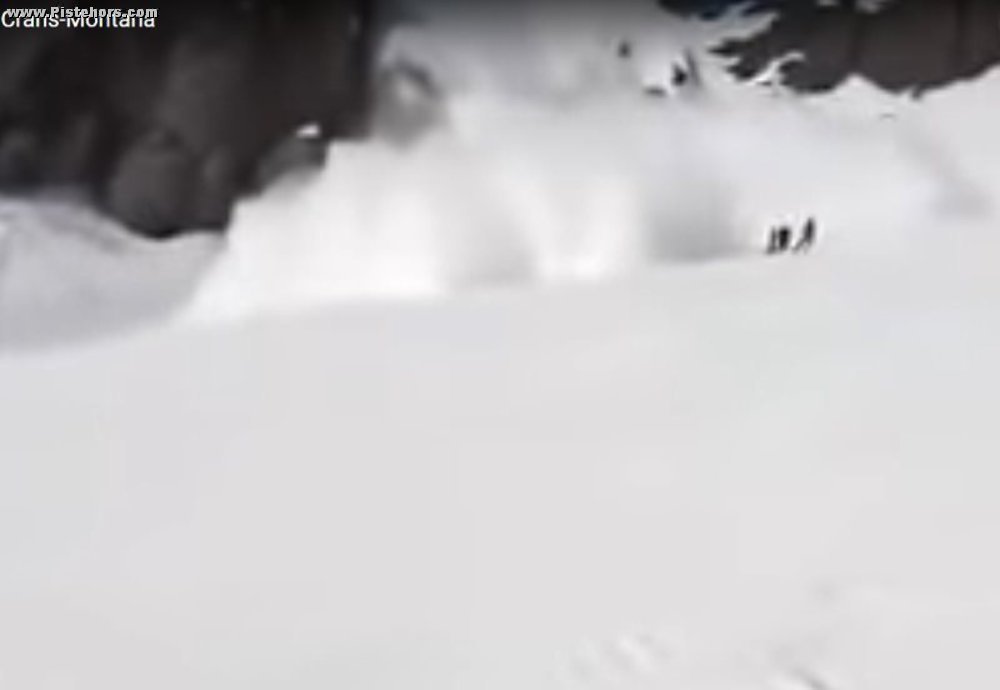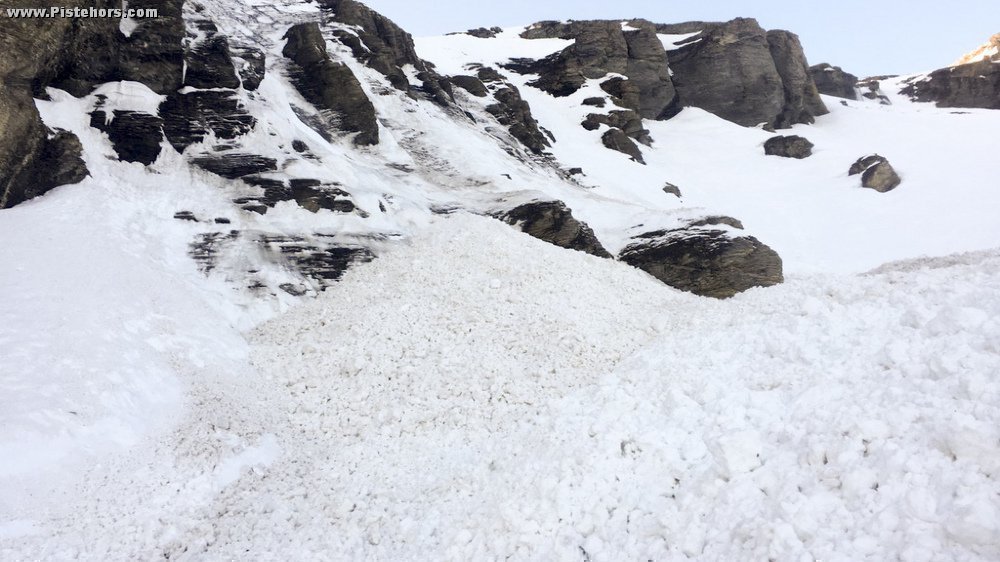Initial reports were of many buried on the open black Kandahar piste at Crans Montana. The press was very excited with much speculation about the numbers caught (dozens according to eye witnesses) and the dangers of skiing in general. By the next day the reality was tragic but much less dramatic and the press pack moved on to another disaster.
So what do we know about the slide? It occurred at 14h20 on Tuesday (19th February) at 2730 meters altitude. After some heavy snowfalls at the start of the month the European alps have been basking in spring like temperatures and sunshine. Records have been broken. All part of the trend to warmer winters it would seem. The slope that avalanched was south-east facing. It would have seen the full force of the sun from relatively early in the morning. In the spring the Kandahar is closed from midday due to the avalanche risk. Apart from the cable car it is the only way off the glacier.
With the spring like temperatures, even if the nights are still quite long, similar precautions were in place. The piste was scheduled to be closed in the afternoon according to the Crans Montana website. On Sunday and Monday it had been been roped off at 14h45, just 25 minutes after the avalanche occurred. A natural, spring snow avalanche is suspected. Locals doubt that the avalanche was skier triggered "no one climbs up that summit to ski, you'd have to be stupid".
Natural avalanches are frequently proceeded by "glide cracks" (sometimes referred to as fish or whale mouths). These get larger over several days or weeks until the anchors with the slope below break and the snow-pack releases, usually down to ground level. It is impossible to predict when, or if, the slope will release. The snow-pack is next to impossible to trigger by artificial means (or the passage of skiers). Experiments have been tried with water injection but they are inconclusive. Fortunately natural avalanches are relatively slow moving. If you are on skis and not in a terrain trap like a gulley it you can generally outrun this kind of slide.

However a video has surfaced that shows members of the piste patrol being engulfed in a large cloud of powder. One of the patrollers was Thierry Meyer who suffered fatal injuries in the avalanche. He is the 2nd patroller death in Switzerland this season. From that angle avalanche doesn't look much like a wet snow slide, but the debris does. We can see a large, porridgey mass of heavy snow. It seems that it was a hybrid slide. Looking at the images of the start zone crown walls are visible. It appears the natural slide then triggered some slabs.
In a video posted on Wednesday French avalanche expert Alain Duclos demonstrates the triggering of a slab via a buried weak layer on a south-east facing slope at 2000 meters. A slope similar to that at Crans Montana. You can see the slab is heavy, spring like snow as seen in the debris at Crans Montana.
The avalanche risk was 2 at the time. The European avalanche scale says "Large natural avalanches not likely". Not likely but not impossible. At the ISSW at Insbruck in 2018 a paper titled QUANTIFYING THE OBVIOUS: THE AVALANCHE DANGER LEVEL (Jürg Schweizer etc.) analyzed 19 years of European data and noted that "Remarkably, avalanche size did not increase with increasing danger level, neither for human-triggered nor for natural avalanches". As Duclos puts it "they've realized from crunching the numbers that there is no relation between the danger level and the size of avalanches, in total contradiction of what you would expect from the European Avalanche Danger Scale"


